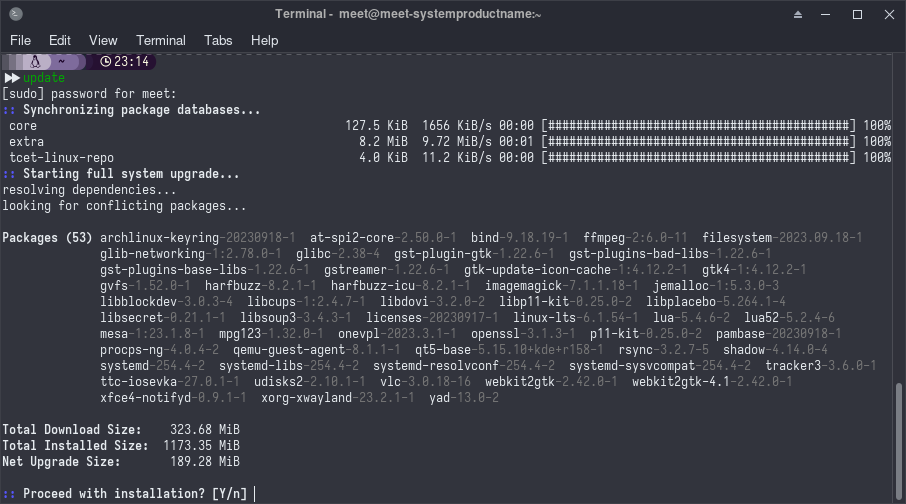System Maintenance
Here's a System Maintenance guide for TCET Linux, including a short guide with a full system upgrade command. System maintenance is essential to ensure the security, stability, and performance of your computer. Neglecting maintenance tasks can lead to security vulnerabilities, system instability, and decreased efficiency. By regularly maintaining your system, you can enjoy a more reliable and efficient computing experience while reducing the risk of data loss and security breaches.
Remember to back up your important data before performing system maintenance, especially if you are removing packages or making significant changes to your system configuration.
Basic System Maintenance Commands
Here are some basic maintenance tasks:
Clean Package Cache:
- Over time, your system accumulates package cache files. To clean them and free up space, use:OR
clr-cachesudo pacman -Scc
- Over time, your system accumulates package cache files. To clean them and free up space, use:
Remove Unneeded Packages:
- Review and remove any unnecessary packages to declutter your system:OR
autoremove package_nameAs explained in Alias Commands Section some packages come with dependencies essential to work them smoothly. Hence this command removes the package with their required dependencies from the system.sudo pacman -Rns package_name
- Review and remove any unnecessary packages to declutter your system:
Check Disk Space:
- Keep an eye on your disk space usage with:
df -h
- Keep an eye on your disk space usage with:
System Monitoring:
- Check for the applications using more than required memory, disk space and CPU consumption and if not needed remove them.
- To monitor this you can use system monitor software installed by default in the TCET Linux system or htop command line utility.
Full System Upgrade
Performing a full system upgrade ensures that your TCET Linux system is running the latest software and security updates. Here's how to do it:
Open a Terminal:
- Launch a terminal emulator on your system.
Run the Upgrade Command:
- To perform a full system upgrade, use the following command:OR
updatesudo pacman -Syyu
- To perform a full system upgrade, use the following command:
The command sudo pacman -Syyu is used in Arch Linux-based distributions like TCET Linux for a full system upgrade. Here's a breakdown of what each part of the command does:
sudo: This prefix is used to run a command with superuser (administrator) privileges. It allows you to execute administrative tasks, like system upgrades.pacman: This is the package manager used in Arch based distributions. It's used for installing, updating, and managing software packages.-Syyu: These are options and parameters for thepacmancommand:-S: This option specifies that you are installing or upgrading packages.-yy: This option forces a refresh of the package databases, ensuring that the package lists are up to date.-u: This option tellspacmanto upgrade all installed packages to their latest available versions.
Follow Instructions:
- During the upgrade, you may be prompted to enter password, confirm package installations or resolve conflicts. Follow the on-screen instructions to proceed.
Reboot Your System:
- After the upgrade is complete, it's a good practice to reboot your system to ensure that any kernel updates take effect:
Restart from the power options menu.
OR
sudo reboot
- After the upgrade is complete, it's a good practice to reboot your system to ensure that any kernel updates take effect:
Restart from the power options menu.
OR
Performing this full system upgrade regularly helps keep your TCET Linux system secure, stable, and up to date with the latest features and improvements.

You can visit to some learning resources listed on Resource Page of TCET Linux documentation.
The System Maintenance was successfully executed! Let's move on and see how we use Application Troubleshooting of TCET Linux.